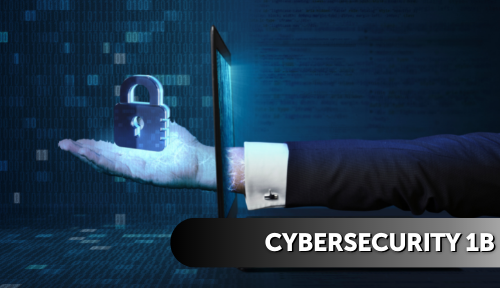Cybersecurity
As part of our IT courses, learn about CHS' Cybersecurity courses.
The Cybersecurity course was designed to keep pace with the growing threat of cyber-terrorism and hostile attacks on corporate and government computer networks.
This course is designed to lay the foundation for a new generation of Cybersecurity professionals.

Course Details

Cybersecurity 1: Foundations
You’ll learn about the various parts of your computer, how they work together, and how you can manipulate them to keep your data safe. You’ll also dive into the tools, technologies, and methods that will help protect you from an attack and discover the many opportunities in the rapidly growing field of cybersecurity.
You’ll learn about the various parts of your computer, how they work together, and how you can manipulate them to keep your data safe. You’ll also dive into the tools, technologies, and methods that will help protect you from an attack and discover the many opportunities in the rapidly growing field of cybersecurity.

Cybersecurity 2: Defense Against Threats
Unmask the cybersecurity threats around you by understanding hackers and identifying weaknesses in your online behavior. Learn to avoid the various types of cyberattacks, including those to your social media accounts, and to predict the potential legal consequences of sharing or accessing information that you do not have rights to. Dig into these crimes in depth by taking a look at cyber forensics and other cybersecurity careers. In a world where such threats have no boundaries, cybersecurity will undoubtedly play an increasingly larger role in our personal and professional lives in the years to come.

Principles of Information Technology 1: Introduction
Students will learn about computer hardware, Von Neumann architecture, peripherals, and maintenance as well as data management and storage options. Learners will trace the history of operating systems and application software while also exploring network systems, administration, and troubleshooting. Finally, students will dive into word processing, spreadsheets, and databases to cement their knowledge of information technology!

Principles of Information Technology 2: Working with Computers
Building on the prior prerequisite course, you will gain further knowledge of information technology. Starting with an overview of programming, algorithms, and compilers, students will then learn the basics of webpage design and creating graphics. You will also explore security and cybercrime, emerging technologies, presentation software, and intellectual property laws. Finally, you will prepare for the future by discovering various careers in this field and planning your education!

Network Security Fundamentals 1: Introduction
Learn what information security is, hackers, viruses, spyware, network systems, identifying potential vulnerabilities, protecting against attacks, and creating a disaster and response plan if breaches do occur. Could you be the security specialist that stops the next cyberattack?

Introduction to Networking 1: Introduction
Ever wonder what it’s like to be a hacker? Or think about who is trying to steal your passwords while you’re shopping online using the Wi-Fi at your local coffee shop? Unmask the cybersecurity threats around you by understanding hackers and identifying weaknesses in your online behavior. Learn to avoid the various types of cyberattacks, including those to your social media accounts, and to predict the potential legal consequences of sharing or accessing information that you do not have rights to. Dig into these crimes in depth by taking a look at cyber forensics and other cybersecurity careers. In a world where such threats have no boundaries, cybersecurity will undoubtedly play an increasingly larger role in our personal and professional lives in the years to come.







